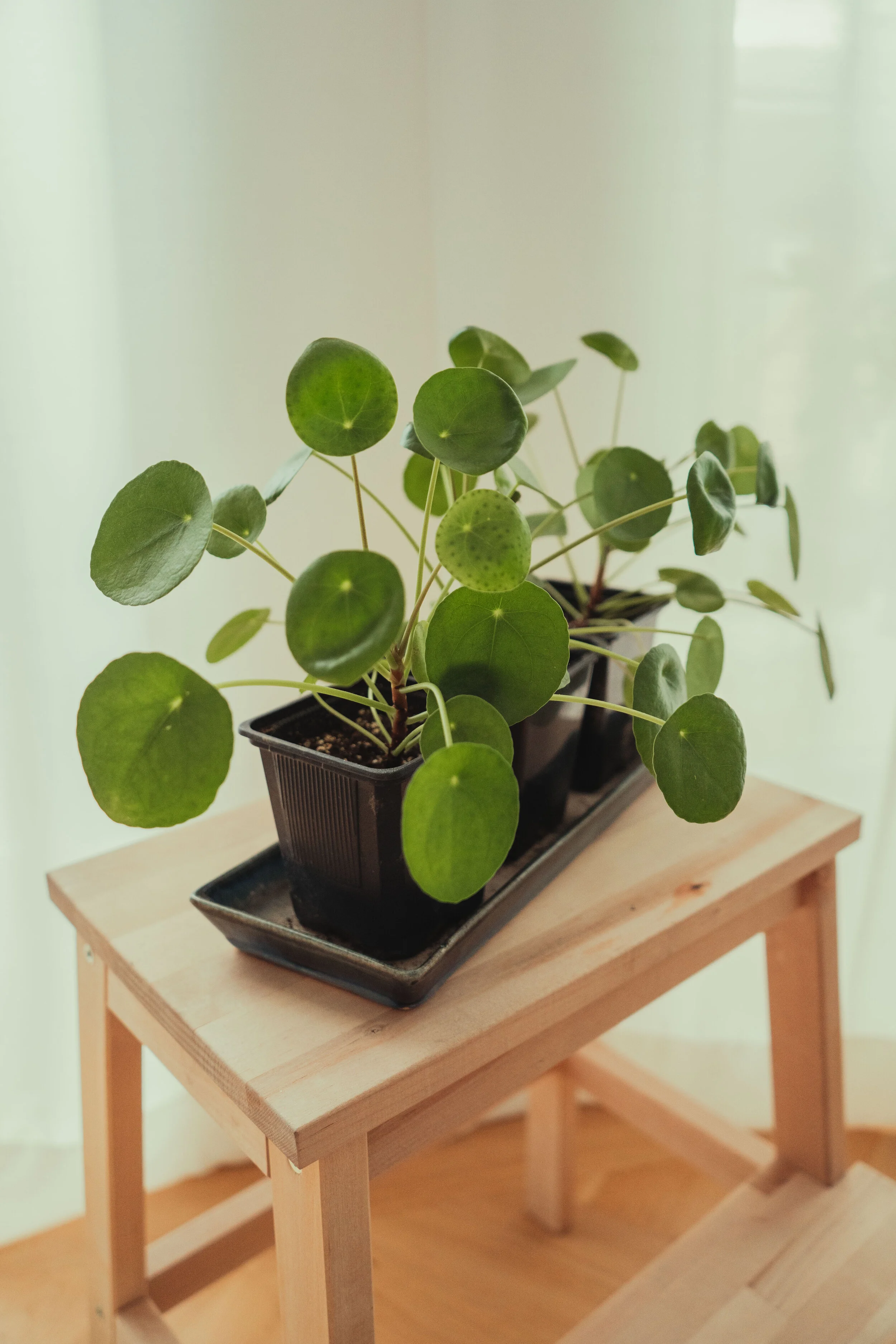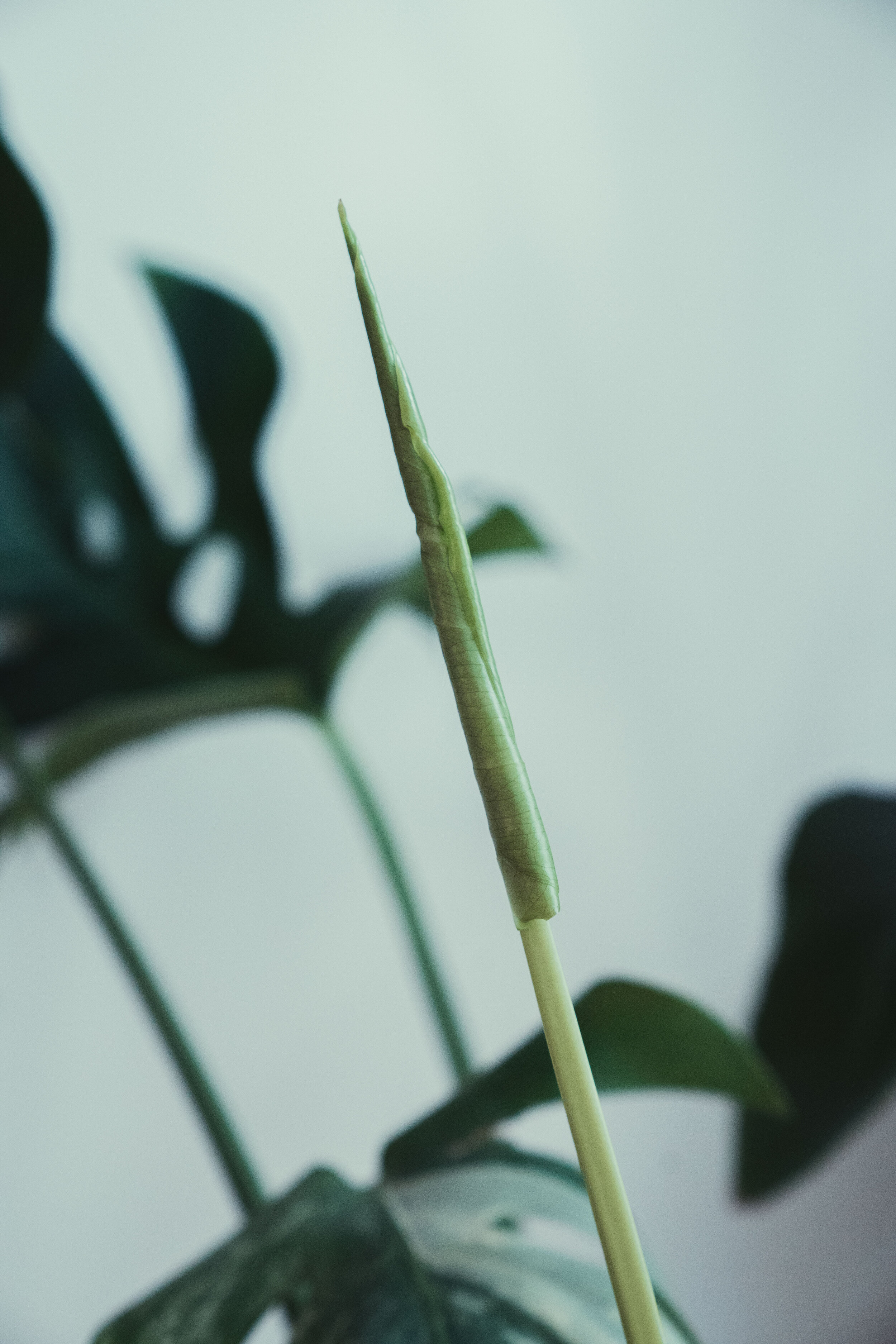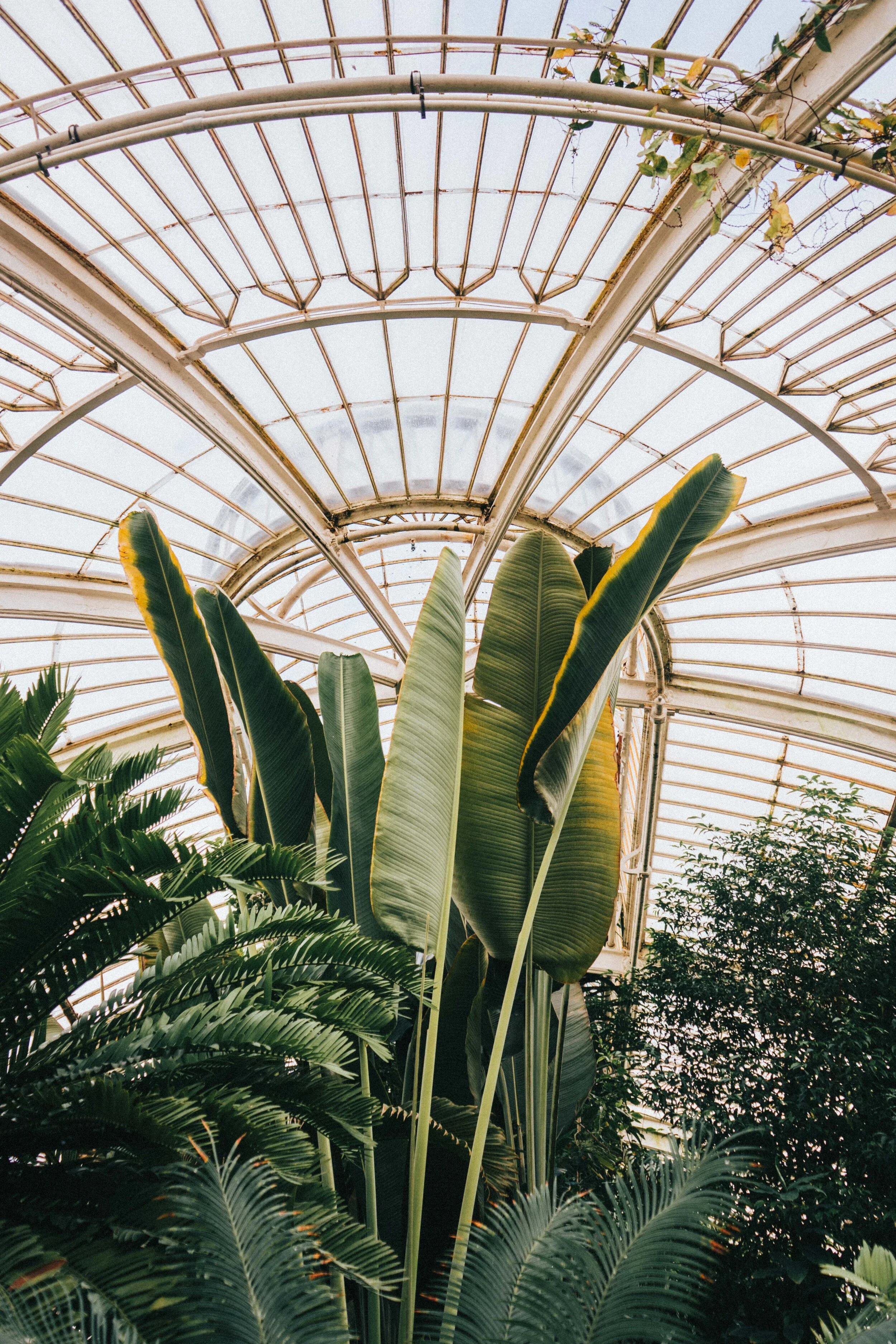The beginner's guide to houseplant care
This article is part of my December 2020 Gratitude series that help me end this year on a more positive and inspiring note.
Plants are a very new addition to my life. I fully appreciated them during the lockdown as they were helping me keep the track of time. However, my journey to house plants proves that anyone can be a successful plant parent. As in everything, once I committed fully to the care, they started flourishing like crazy.
When I was younger, I used to have the curly bamboo from IKEA that you put into a see-through vase. You only water when the level is low. It couldn't be more straightforward, and I still failed. There were few other attempts at dracenas, cacti… plants that are considered to be the easiest to take care of. However, it was always only about having an object in my room that I had to provide water.
Then I went to New York with Miska (and maciky!). The most enthusiastic plant person I personally know. She had several plant stores pinned on maps, just in case we were passing by. And we made sure we did. The stores were so charming! Filled with plants I have never seen and cute objects, books, cans... I had no idea! I thought plants only come from IKEA and Home Depot!
Green Fingers Market in New York (2 minute walk from Butcher’s Daughter btw!)
I bought my first Pilea Peperomioides shortly after the trip. After a while tho, the excitement vanished, and it started dying. Because I still did not commit! And that was when I finally understood. For the first time, I put my fingers into the soil and repotted a dying plant. While I was at it, the guy in the youtube tutorial told me to propagate. Until this point, I thought propagation meant spreading an idea. That was December 2019. And today, I have two Pileas twice as big, from the dying mother plant.
December 2019
May 2019
December 2020
The obsession grew, I now have around 30 thriving plants. We even partnered with our local plant store Svokrine Jazyky and I ended up designing their new shop! Still work in progress, but it must have been one of my favourite things I ever worked on.
Later, people that came to my house started noticing, and I gladly earned a reputation of a plant first aider. The following are the things I have learned are the most common mistakes I made and other beginners tend to do too.
But first few pictures of my plants that I love to get into the green zone:
The absolute basics of houseplant care
Choosing the right plant for your space
There is no shame in not knowing. When it comes to plants, If you are a beginner I recommend asking in the store. And by store, I mean your local plant store, not hardware chain seller that has a plant section. You not only support small local business but will also have an opportunity to speak to a caring plant parent with years of experience. And they will want you to succeed!
If you are one of those people that don't like to be asked ANYTHING while shopping, do research beforehand. Don't start with complicated plants, it might discourage you. First, you need to decide on how committed you want to be. Some succulents don't need to be watered for months. Other plants need weekly care. Observe the light conditions of your place. If you have an east or south-facing window. Some plants need direct sunlight, some bright light and others thrive in the shade. Easy to care and low light plants are for example pothos, spider plant, snake plant or a ZZ plant. Direct sunlight loving plants are aloe vera, jade plant, string of pearls, cacti and some palm trees.
EXTRA TIP
- Plants with bright coloured or variegated leaves like more light than others.
- Some plants are toxic for pets, another parameter to look out for.
- If you travel often, make sure you have a plant loving friend to take care of your plants. Do not leave this task to your parents!
Choosing the right pot for the plant
This, for some, might seem like a no-brainer. But it happens! The absolute basic for plant care is having a pot that drains. With holes at the bottom! Roots will rot in soggy soil. That is why you need two parts - one container with holes, and the outer decorative. Or a pot with a plate (saucer) underneath, like for example terracotta pots. Even though you might never see any water in the saucers, the plants need to know they have the option if necessary. Don't drown your plants! If the pot is too small, plants will become rootbound, and the soil will not hold enough moisture between waterings. If it is too large, your plants may spend all of their energy on root development instead of growth. If you plan to re-pot after the purchase, keep the pot the plant came in and just switch the soil. Then upgrade to 2cm bigger pot when the plant gets bigger.
EXTRA TIP
- Be careful with darker shades of pots as they attract and retain more sunlight and make the soil warmer. Keep your roots cool!
- Some plants need to be bottom watered, so they need to be planted in pots with saucers.
- Terracotta pots can "breathe," which keeps the soil cool and takes excess moisture away from plant roots, keeping them healthy. Beware that plants that prefer moist conditions may need to be watered more frequently in terracotta.
- If you see white spots on terracotta planters, it means you have hard tap water, use distilled instead.
How often to water your plants
If the plant is in well-draining soil, in a pot with drainage holes, you should water most plants when the top 2cm of soil feels dry. Some people stick to a schedule, like watering on Sundays. But different plants need different care, so instead, I advise to check each plant regularly. If the plant looks "sad" and the soil is moist, don't water it more. Overwatering is one of the most common reasons that plants die. You can tell if the plant is overwatered when the leaves start turning yellow. On the opposite, when the leaves wrinkle, the plant is thirsty. If you are not sure, it is better to wait a day. In general, it is better to water your plants in the morning.
EXTRA TIP
- Plants in small pots need to be watered more frequently.
- Most plants are actively growing in summer, so they need more water while in winter during a resting period, they require much less.
- Fill a few open containers or cans with water and let them sit overnight to let the chlorine evaporate before watering.
- Misting houseplants is a very simple and effective way to boost humidity.
- Plants with brown or dry leaf tips will benefit from regular misting.
The importance of fertilising
As plants grow, they extract nutrients from the soil. If they were in nature, they would be exposed to it naturally (wood, animals, humus). Since they are at your home, making you happy instead, you need to give them these fertilisers. I can't really be more helpful here, as each type is different, so you need to carefully read the instructions or ask in the store. Each plant needs a different mixture on various frequency. However, for most plants fertilising is recommended once per month from spring to fall. But do your research, as for example, ZZ Plants and Pileas only need to be fertilised 4 times per year.
EXTRA TIP
- NPK Ratio: numbers on fertilisers (10-10-20, 10-30-10…) represents a ratio of the available nutrients by weight - Nitrogen, Phosphorus and Potassium.
How to troubleshoot what is wrong with your houseplants
When your plants are unhappy, they will let you know. Your job is to figure out why. Observe and learn. Unfortunately, there will be times when you won't succeed. And some plants will die. It happens to everyone and it is good to learn to make a peace with that. There is always that one plant that will hate you. No shame! It would not be your fault if you tried. For me, it was a banana plant. I did everything to save it. She dead. Good news is, most of the times, you will succeed and these are some most common things to look out for:
OVERWATERING
Signs: Yellow, wilted, droopy leaves that are still soft.
Solution: Allow the water to soak thoroughly through the soil and wait a few days to water again.
LACK OF SUNLIGHT
Signs: Plants that are lanky, floppy, pale, are shedding leaves or have new growth that is pale and flimsy.
Solution: Find out what kind of sunlight does your plant need, based on that find the perfect spot. Chances are, you don’t have enough direct sunlight in your home. Also, most plants don't like to be moved frequently, but some require to be turned.
DEHYDRATION
Signs: Brown leaf tips or crispy edges.
Solution: Put the pot into sink/tub and let a small amount of water go through for a few minutes. After, start watering more frequently. Some roots don’t get enough water due to the size of the pot. For repotting, choose a pot roughly 2cm bigger than the previous one. Otherwise, the roots will stress again, trying to grow too much.
PESTS OR INFECTIONS
Signs: Leaves with brown spots, holes, nibbled edges or insects.
Solution: Inspect the plant thoroughly at the store. If the plant is already in your home, isolate the plant, remove any infected leaves and wipe insects off using a damp cloth or soapy water. Then apply neem oil.
NUTRIENT DEFICIENCY
Signs: Lack of new growth, new leaves never grow to the same size as the old ones. In the case of nitrogen and potassium deficiencies - yellowing of tips and edges, and iron - full yellowing of leaf.
Solution: People suggest adding coffee grounds to soil. I personally never tried this before, so I recommend researching this further. I usually re-pot to new soil and fertilize.
LOW HUMIDITY
Signs: Loose leaves or brown streaks common during winter months. Typical for tropical plants, that need humidity.
Solution: Spray plants with water frequently and put plants closer together, so they harvest humidity amongst each other.
Words of encouragement for every new plantparent
Plants are delicate creatures, and it will take some time to heal if something goes wrong. Don't give up on it. Every experienced plant parent knows that losing a leaf or two is normal. It creates space for new growth! Then even if the plant dies, never be hard on yourself. Once you are familiar with the process, there is so much fun you can have with plants. You can grow your plant family, repot, propagate, take beautiful pictures and most importantly, they are the best listeners! Just don't bee too negative around them. They might feel it :).
LAST EXTRA TIP
Once I started with plants, I followed the big accounts that share daily inspirations of peoples homes and care tips. It flooded my feed with greenery. I am also in some Facebook groups. People share their struggles and triumphs there. Be prepared for a lot of body positivity, empathy and bans for being rude. Unfortunately, if you want to ask something there, it might get lost in a lot of daily posts. Find a smaller or local plant group for daily conversations.
IG: Thejungalow, Urganjungleblog, Plantsonpink, Satie_san, Plants.in.frame (my friend’s IG that got me into this!) #monsteramonday #plantsmakepeoplehappyFB: House Plant Hobbyists & House Plant Lovers
I usually turn to youtube for guides. I love seeing real-time the things they are talking about. You can find videos on repotting, tips on propagation, different kinds of plants etc. The plant queen is PLANTERINA, with one of the biggest channels out there. I also love Crazy plant guy. But I will trust most of the people making videos about plants if they are surrounded by hundreds of them on the thumbnail.
YB: Planterina & Crazy Plant Guy
So once agaain, today, I am thankful for my new found love for plants and all the happiness they bring me in my space every day. And what are you grateful for today?













